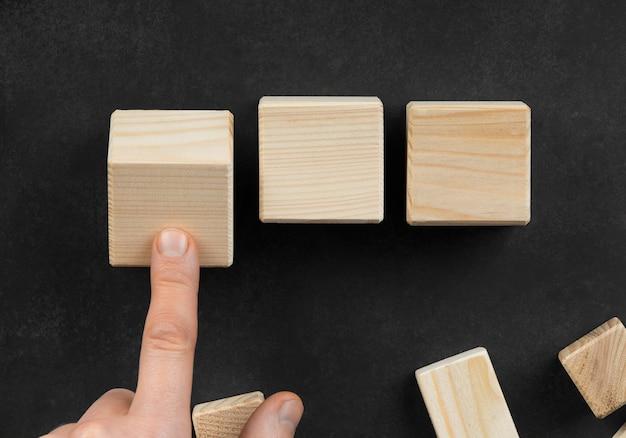Welcome to our blog post where we dive into the fascinating world of geometry! If the mention of cubes and cuboids makes your head spin with curiosity, you’ve come to the right place. Today, we’re going to unravel the secrets behind the surface area of these geometric wonders.
Are you unsure about the difference between mass and volume, or do terms like CSA and TSA sound like alphabet soup to you? Fear not! We’ll navigate through the math jargon and equip you with a solid understanding of surface area, volume, and their interplay.
Plus, we’ll address burning questions, such as the formulas for calculating surface area and volume, the unit of surface area, and even peek into the similarities and differences between surface area and volume. So, fasten your seatbelts, and let’s embark on this geometric adventure!

What is the Surface Area of a Cube and Cuboid
When it comes to geometry, the surface area of a cube and cuboid is a fundamental concept that you simply can’t ignore. It’s like the icing on the cake, or should I say, the cheese on a pizza? So, buckle up and get ready to wrap your head around the surface area of these marvelous 3D shapes.
Unboxing the Surface Area of a Cube
Oh, the beauty of a cube, with its perfectly equal sides. It’s like the James Bond of geometry – sleek, symmetrical, and mysterious. But enough with the fanfare, let’s dive into calculating its surface area.
To find the surface area of a cube, we need to multiply the length of one side by itself and then multiply it by 6. Why 6, you ask? Well, you can think of it like dressing up the cube with six identical square faces, just like giving it a new wardrobe every day of the week.
Calculating the Surface Area of a Cube
Let’s say the length of one side of our cube is represented by ‘s’. To calculate the surface area, we use the formula:
Surface Area of a Cube = 6s^2
Easy peasy, right? Now you can impress your friends with your cube knowledge at the next math-themed party. Trust me, they’ll be cube-struck!
Unlocking the Surface Area of a Cuboid
Ah, the cuboid – the not-so-distant cousin of the cube and a shape that dominates our everyday lives in ways we might not even realize. From cereal boxes to TV sets, the cuboid is everywhere! But have you ever wondered how to find its surface area? Let’s crack the code!
To calculate the surface area of a cuboid, we need to add up the areas of all its rectangular faces. Imagine it as a puzzle and you’re trying to put all the pieces together to unlock the right answer.
Calculating the Surface Area of a Cuboid
Let’s consider a cuboid with length ‘l’, width ‘w’, and height ‘h’. Now, to find the surface area, we use the formula:
Surface Area of a Cuboid = 2lw + 2lh + 2wh
A bit more math, but trust me, it’s worth it. Just think of the cuboid as a treasure chest waiting to be opened, and the surface area is the key that unlocks all the hidden wonders within.
Wrapping It All Up
Now that you’ve mastered the surface area of a cube and a cuboid, you’re armed with some serious geometry knowledge! So go ahead, flaunt these formulas like a math wizard. Impress your friends, wow your teachers, or just satisfy your own thirst for mathematical adventures. Geometry just became your favorite subject, didn’t it?
Remember, understanding the surface area of these shapes not only gives us insight into their dimensions but also unlocks a world of possibilities in architecture, construction, and design. So, keep exploring and uncovering the secrets of geometry!
Keep on learning, my fellow geometry enthusiasts, and may the surface area be with you!
References
- None.

FAQ: What is the Surface Area of a Cube and Cuboid
Welcome to our FAQ section on the surface area of cubes and cuboids! We know you’ve got questions, and we’ve got answers. So, let’s dive right in!
What is CSA in Math
CSA stands for Cross-Sectional Area. It is a term used in mathematics to describe the area of a shape that is created when an object is cut perpendicular to its length.
What is Cube Formula
The formula to calculate the surface area of a cube is quite simple. Just multiply the length of one side by itself and then multiply that result by 6. In mathematical terms, it can be written as (6s^2), where (s) is the length of one side of the cube.
What is the Difference Between Mass and Volume
Mass and volume are two different properties of an object. Mass refers to the amount of matter in an object, while volume is the amount of space that the object occupies.
What is the Surface Area of a Cube and Cuboid
The surface area of a cube is the sum of the areas of all its sides. Since a cube has six equal sides, you can calculate the surface area by multiplying the length of one side by itself and then multiplying that result by 6. On the other hand, a cuboid has different side lengths. To find its surface area, multiply the length, width, and height of the cuboid and then double the resulting value.
What is the Area of the Cross Section of Wire
The area of a cross-section of a wire is the measure of the surface enclosed by the wire. The shape of the cross-section will determine the formula to calculate its area.
What is the Formula of TSA of Cylinder
The formula to find the total surface area (TSA) of a cylinder is given by adding the areas of its two circular bases and the lateral surface area. Mathematically, it can be written as (2\pi r(r + h)), where (r) is the radius of the cylinder and (h) is its height.
Is Surface Area Proportional to Volume
No, surface area and volume are not directly proportional. While surface area represents the exterior area of an object, volume measures the space inside that object. So, they represent different characteristics of an object.
What is the Difference Between Area, Surface Area, and Volume
Area refers to the size of a surface, usually measured in square units. Surface area, on the other hand, is the sum of the areas of all surfaces of a solid object. Volume, however, is the measure of how much space a three-dimensional object can hold.
What is the Surface Area of a 2x2x2 Cube
A 2x2x2 cube means that all sides of the cube have a length of 2 units. To find the surface area, we use the formula for a cube: (6s^2). Plugging in the value of (s) as 2, we get (6(2^2) = 24). So, the surface area of a 2x2x2 cube is 24 square units.
What is the Surface Area of a 4 cm Cube
For a 4 cm cube, each side has a length of 4 cm. Using the surface area formula, we have (6s^2). Plugging in the value of (s) as 4, we get (6(4^2) = 96). Therefore, the surface area of a 4 cm cube is 96 square centimeters.
What is Surface Area and Volume
Surface area refers to the total area of all the surfaces of a three-dimensional object. Volume, on the other hand, is the measure of how much space a three-dimensional object occupies.
What is the Unit of Surface Area
Surface area is measured in square units, such as square centimeters (cm²), square inches (in²), or square meters (m²), depending on the system of measurement used.
What are the Formulas for Surface Area and Volume
The formula for surface area depends on the shape of the object. For example, for a cube, it is (6s^2), while for a cuboid, it is (2(lw + lh + wh)). The formula for volume also varies based on the shape. For a cube, it is (s^3), while for a cuboid, it is (lwh).
What is the Difference Between Total Surface Area and Volume
Total surface area (TSA) refers to the sum of the areas of all the surfaces of a three-dimensional object. Volume, on the other hand, measures the amount of space that the object occupies.
What is Inner Surface Area
Inner surface area refers to the total area of the interior surfaces of a hollow object. It is calculated by subtracting the outer surface area from the total surface area.
What are the Similarities and Differences Between Surface Area and Volume
Both surface area and volume are measurements used to quantify three-dimensional objects. However, surface area represents the exterior area of an object, while volume measures the space inside that object.
And there you have it! We hope this FAQ section has answered all your burning questions about the surface area of cubes and cuboids. If you have any more queries, feel free to reach out to us! Happy calculating!
